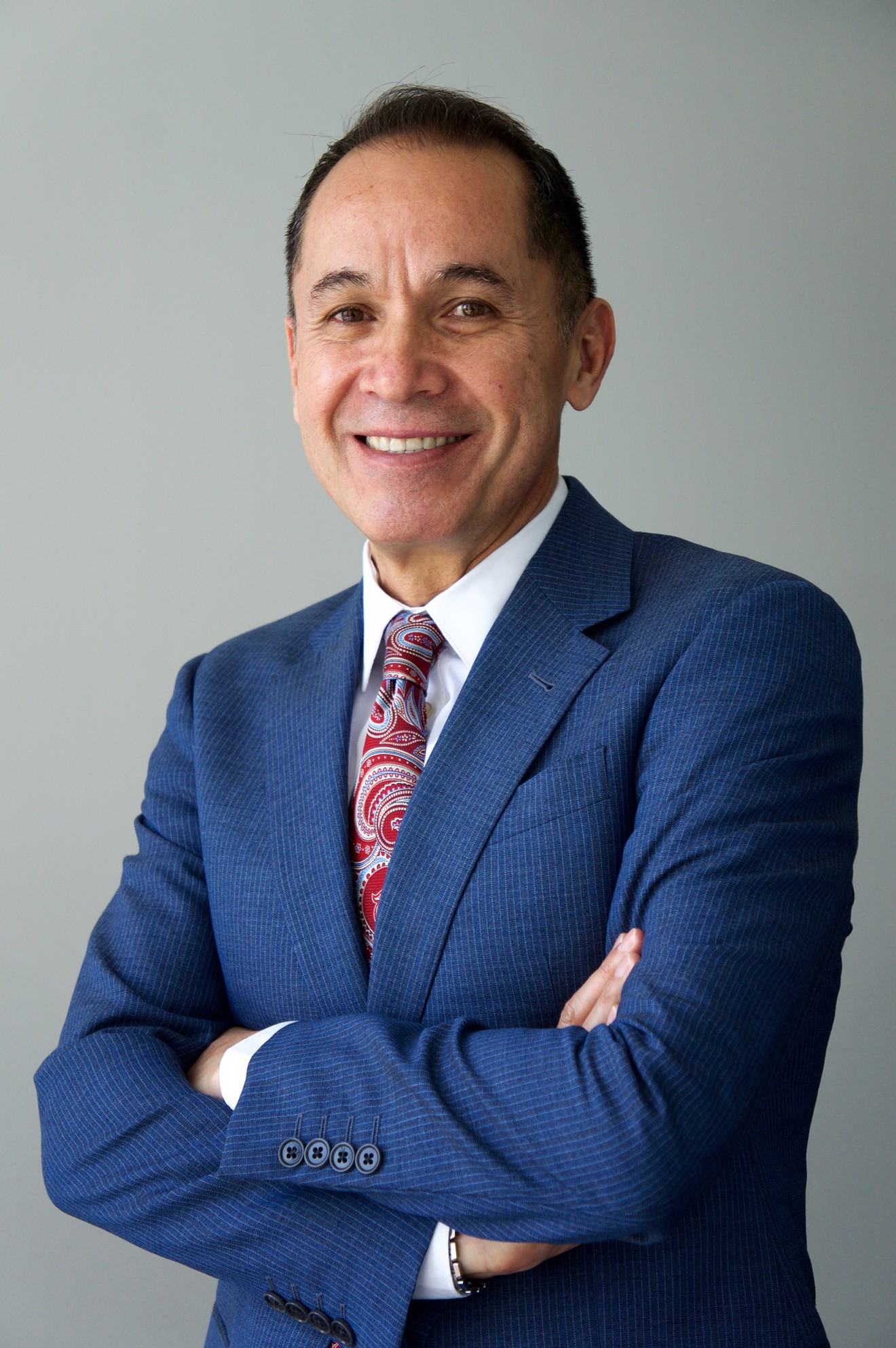It’s been six months since Agustín Arteaga took over the directorship role at the Dallas Museum of Art, the crown jewel of the Arts District. The position was left vacant for nearly a year after the sudden, perplexing departure of the previous director, Maxwell Anderson, in September 2015. There were rumors of staff unrest and concerns about the museum’s balance sheet, although Anderson did a lot that benefited the museum like raising $40 million for the endowment and making admission free for the museum collections, which increased attendance across the board.
Arteaga was most recently the director of Museo Nacional de Arte (MUNAL) in Mexico City and previously was director of Museo de Arte de Ponce (MAP) in Puerto Rico and the founding director of the contemporary art museum Museo de Arte Latinoamericano de Buenos Aires (MALBA) Fundación Costantini in Argentina.
With astoundingly little lead time, Arteaga brought the exhibition México 1900–1950: Diego Rivera, Frida Kahlo, José Clemente Orozco, and the Avant-Garde to the DMA, its only U.S. viewing. It’s an exhibition he curated for the Grand Palais in Paris with nearly 200 pieces of art from over 61 lenders. So far, it’s been wildly successful here. After its opening on March 12, the museum saw the largest opening-week attendance in nearly 10 years.
We talked with Arteaga about the exhibition, what he’s learned in his first six months on the job and what he has planned for the museum going forward.
Dallas Observer: Welcome to Dallas. You officially took over in September, so it's been six months. What have you found in the first six months of your directorship?
Arteaga: I have found only wonderful things. I have found an extraordinary, vital city. I have found an energetic and creative artistic community. I have found a wonderful, lush number of collectors in many diverse fields. I have found a fantastic institution with a staff that’s able to pull out a big exhibition like this [Mexico exhibition] in a rather short time. It’s unbelievable that it could actually happen. And a great board of trustees that are mindful of the mission of the museum; they are all committed with passionate love to art and to the people in Dallas. Is that a good resume for six months?
I saw the Mexico exhibition; it’s beautiful. You’re a citizen of Mexico, and your most recent directorship was in Mexico. I’m curious how you decided to bring the exhibition to the DMA?
As a museum director, it’s not often that you’re involved in a curatorial project. This usually lands on the curators, and you’re the director guiding the overall project and helping find the subjects that you want to address. This was the first time [I curated for the DMA] and I would very much like to have the opportunity for a second time.
This exhibition had such enormous success in Paris, and since we [at the DMA] have a history of presenting and collecting Mexican art, it would be ideal. There was little chance we could build an exhibition like this in the near future; probably not before five years or so. This was a great opportunity, and we decided to go forward although it was a very big challenge in every way: designing the exhibition, getting the catalogue published in two languages, being able to negotiate with Grand Palais and Mexico that the exhibition would have this venue when it was not previewed to be seen anywhere else other than Paris. The board supported the idea. So far it has proved in a very short time to be a successful exhibition and there’s a big increase in the public at the museum.
How much has the Mexico exhibition increased attendance?
It’s been the largest attended exhibition in the first week, in the last probably eight or 10 years. We had over 34,000 visitors to the museum in the first week, and out of those, 12,000 went to see the Mexico exhibition. This is a record over the first week when we went free, which doubled the visitorship. That means it was a pretty good week.
I’ve read there’s a lack of Latin American art here in North Texas, and I’m curious if you agree with that.
There’s a lot of Mexican art, that’s for sure. And there are some important collectors that have expanded into Latin American art. What I discovered, since 1933, [the DMA] did the first retrospective of Roberto Montenegro, and ever since, we’ve done 33 exhibitions of Mexican art. That tells you that the DMA has been keen in presenting in Mexican art. But this [exhibition] is by far the largest ever presented.
Was bringing it here a political statement? Or because you had this great exhibition and you wanted to show it in your new role here?
The bottom line of our mission is to make great works of art accessible to everyone, and this exhibition gathered the most important Mexican artworks from the first half of the 20th century. That was a unique opportunity that came about before the political climate had gone to where it is now. It’s a great way of being able to show that the DMA cares about its own collection. We are fostering and presenting the cultures from across the globe since we are an encyclopedic museum; we have a responsibility. I’m very in favor of building our exhibitions starting with the things that we collect. This exhibition has 14 works that are from our own collection.
Tell me about your initiatives for the museum. What’s next on your agenda?
There’s a lot of things happening. The most important is that we want to reinforce, and to grow, and to let people know that the Dallas Museum of Art is really the city museum, and therefore everyone in the city should feel ownership of it. We want to be able to reflect the diverse communities that make this city so exciting. This is the new melting pot. You have a city that’s composed of people from all over the world. I’m looking here out my window in my office and I see Klyde Warren Park. I see everyday people from across the globe enjoying the park with their families and playing with their kids, and that is reflected in our galleries, in our collections. We really want to make a bigger effort to enlarge the community of visitors to the museum.
Under the previous director, the free admission to the permanent collections brought more diverse populations into the museum, including some of the underserved communities. I’d also heard that there were some financial troubles with the museum. Is the free admission something you plan on keeping around?
Absolutely. I can tell you with great satisfaction that we are also looking into ways of making the museum more accessible. For this exhibition, we were able to find eight sponsors that will invite visitors free to the show on Sundays. We’re calling them “Family Sundays.” They’re sponsored, so it’s not a larger burden on the museum. I’m sure you know, the cost of temporary exhibitions is $16 per person, or you ought to have a membership. We’ve been working with a special outreach program for underprivileged communities and inviting everyone to visit the museum during those eight Sundays when they’ll have free access.
You’ve had very successful tenures at other museums where you increased partnerships, dramatically grew attendance and established new streams of support. Do you have other examples of how you plan to support museum initiatives and integrate more of the community into the museum?
I’m building on the past. This institution was born 115 years ago. This is great because there’s a solid base to move forward. Actually the bar is pretty high, so it’s difficult to push it higher, but we are trying to do that. The next exhibition that will be following this is the presentation of our permanent collection of Islamic art, the Keir Collection, that’s happening mid-April. We’re working on being able to have more activities and programming probably by October or November this year around the exhibition.
We’ll have a scholarly symposium and performing art. We want everyone to know about the different cultures that are represented here and that represent the globe. Next year we have a beautiful program, the gold of Ghana, the regalia [called The Power of Gold: Asante Royal Regalia from Ghana], which is working from our own collections. And exhibitions on 20th century art ... and important contemporary mainstream artists; the big stars. I’m really trying to diversify the programming and be able to speak to everyone.
There had been talk of expanding the museum’s physical space. Is that something you’re looking at doing?
The first thing I have to do, and we’re working strongly and quickly with the board and the staff, is prepare a strategic plan to define the needs and the commitment the museum will be facing in the years to come.
When does that strategic plan happen?
It’s been happening since I arrived. We will probably deliver this by the start of the next fiscal year: July 1.
In what ways has your background and experience prepared you for this role at the DMA?
I’m prepared to work in any institution. I’ve been 30 years as a director of museums. I don’t very much like to talk about myself, but I have a successful track record, having the experience that not many other people have, like doing a museum from scratch, which was MALBA, the Museum of Latin American Art in Buenos Aires. Perhaps as of today, [it’s] one of the most important museums in South America and absolutely in Buenos Aires. That's provided me with experience and skills that are particular. Or running the National Museum of Art [MUNAL] in Mexico, or having been the director of visual arts in Mexico where 20 museums reported to me. I’ve been able to have different experiences, particularly large activity in the international field. I’ve worked with the largest museums in Europe and in the United States.
[
{
"name": "Air - MediumRectangle - Inline Content - Mobile Display Size",
"component": "18855504",
"insertPoint": "2",
"requiredCountToDisplay": "2"
},{
"name": "Editor Picks",
"component": "17105533",
"insertPoint": "4",
"requiredCountToDisplay": "1"
},{
"name": "Inline Links",
"component": "18349797",
"insertPoint": "8th",
"startingPoint": 8,
"requiredCountToDisplay": "7",
"maxInsertions": 25
},{
"name": "Air - MediumRectangle - Combo - Inline Content",
"component": "17105532",
"insertPoint": "8th",
"startingPoint": 8,
"requiredCountToDisplay": "7",
"maxInsertions": 25
},{
"name": "Inline Links",
"component": "18349797",
"insertPoint": "8th",
"startingPoint": 12,
"requiredCountToDisplay": "11",
"maxInsertions": 25
},{
"name": "Air - Leaderboard Tower - Combo - Inline Content",
"component": "17105535",
"insertPoint": "8th",
"startingPoint": 12,
"requiredCountToDisplay": "11",
"maxInsertions": 25
}
]











